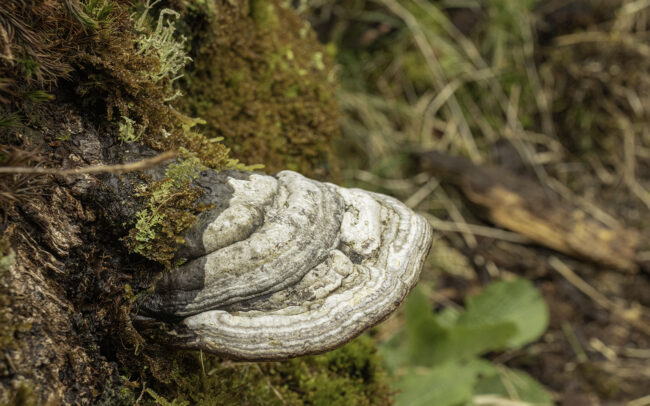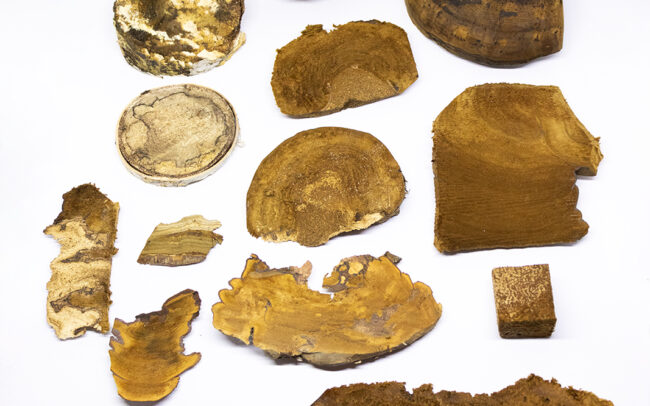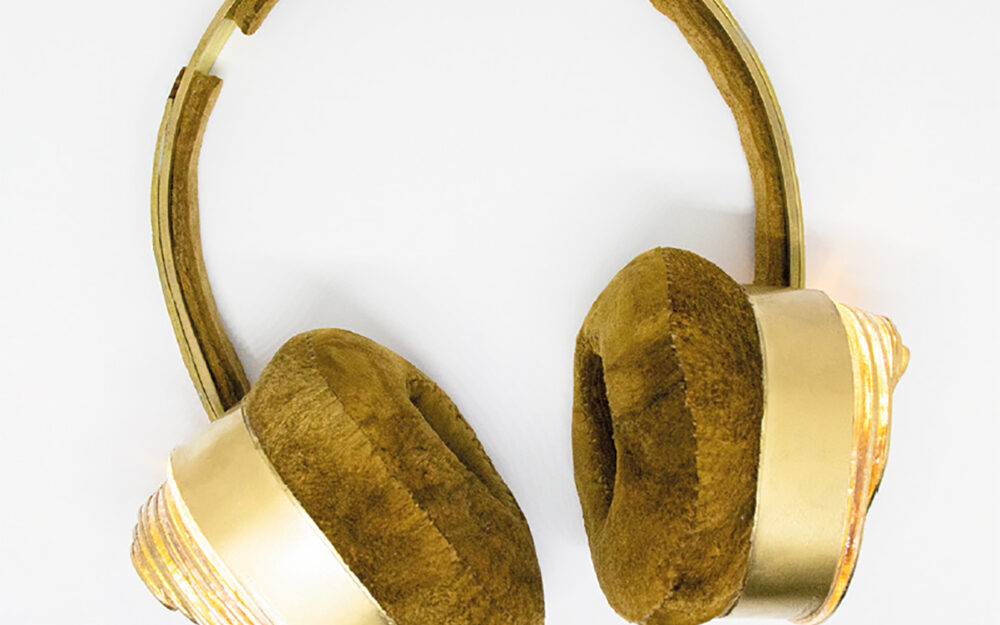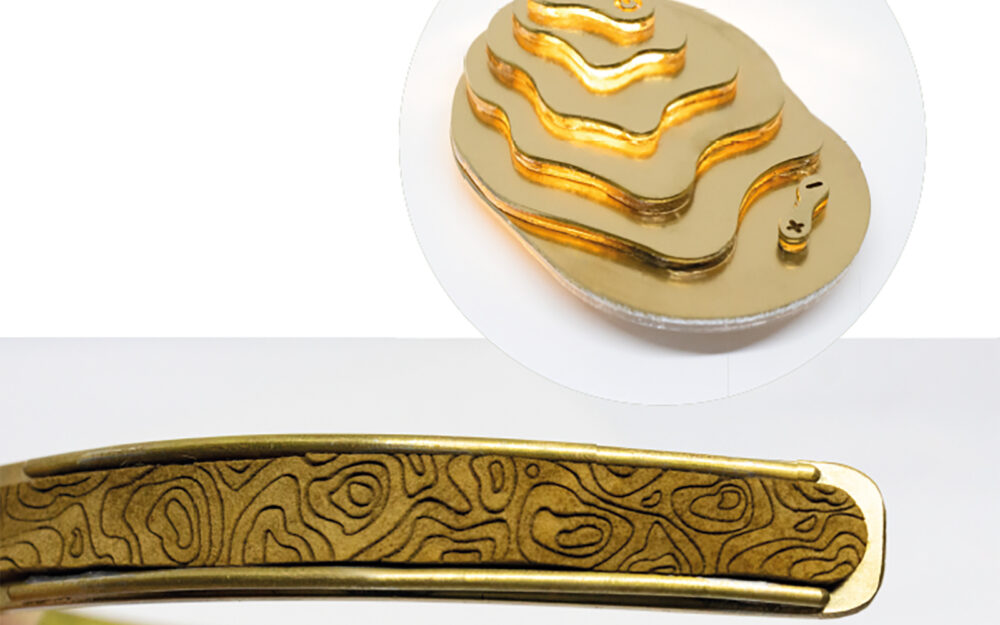Mushrooms are fascinating organisms that surround us everywhere. This master’s thesis focuses on the tinder fungus, a regional tree fungus with an extensive history and impressive properties. The goal of this thesis is to understand the tinder fungus in all its biological facets and reinterpret the role it once played for humans. The thesis serves to engage with the material and the possibilities it offers, as well as to question our handling of materials. The end product is not the focus here, but is intended to serve as an application example to rekindle the conversation about fungal materials, in this case the tinder fungus, and share the newfound fascination for fungal materials with others.
To design for the future as a designer, we should co-create with nature and rethink the paradigms of our consumption behavior and our production processes. The diverse expressions of bio-based materials already range from bio-plastics like PLA to materials made from bacteria, algae, fungi, or industrial food waste. The exploration and use of innovative bio-based materials is no longer just a design task but represents an intersection of design, material sciences, biology, and craftsmanship.
This intersection is found in the fungus “Fomes fomentarius”, also known as the tinder fungus. From the fruiting body of this tree fungus, a fabric and leather-like material can be obtained, which is still practiced today as a traditional craft in Romania. The material, also referred to as “Trama” or “Amadou Leather”, offers many interesting biological properties. The following work is concerned with exploring the possibilities of the material and testing its limits. These currently consist mainly of a lack of material stability, limited size due to growth, lack of homogeneity, limited color combinations, and the harvest and processing which is currently carried out exclusively by hand.










